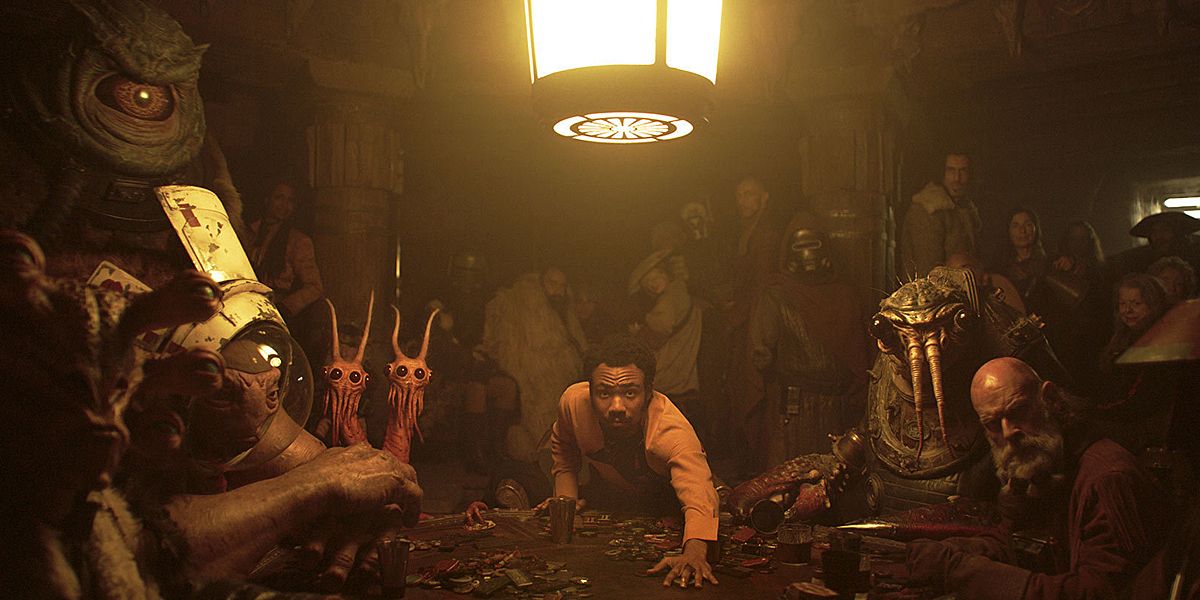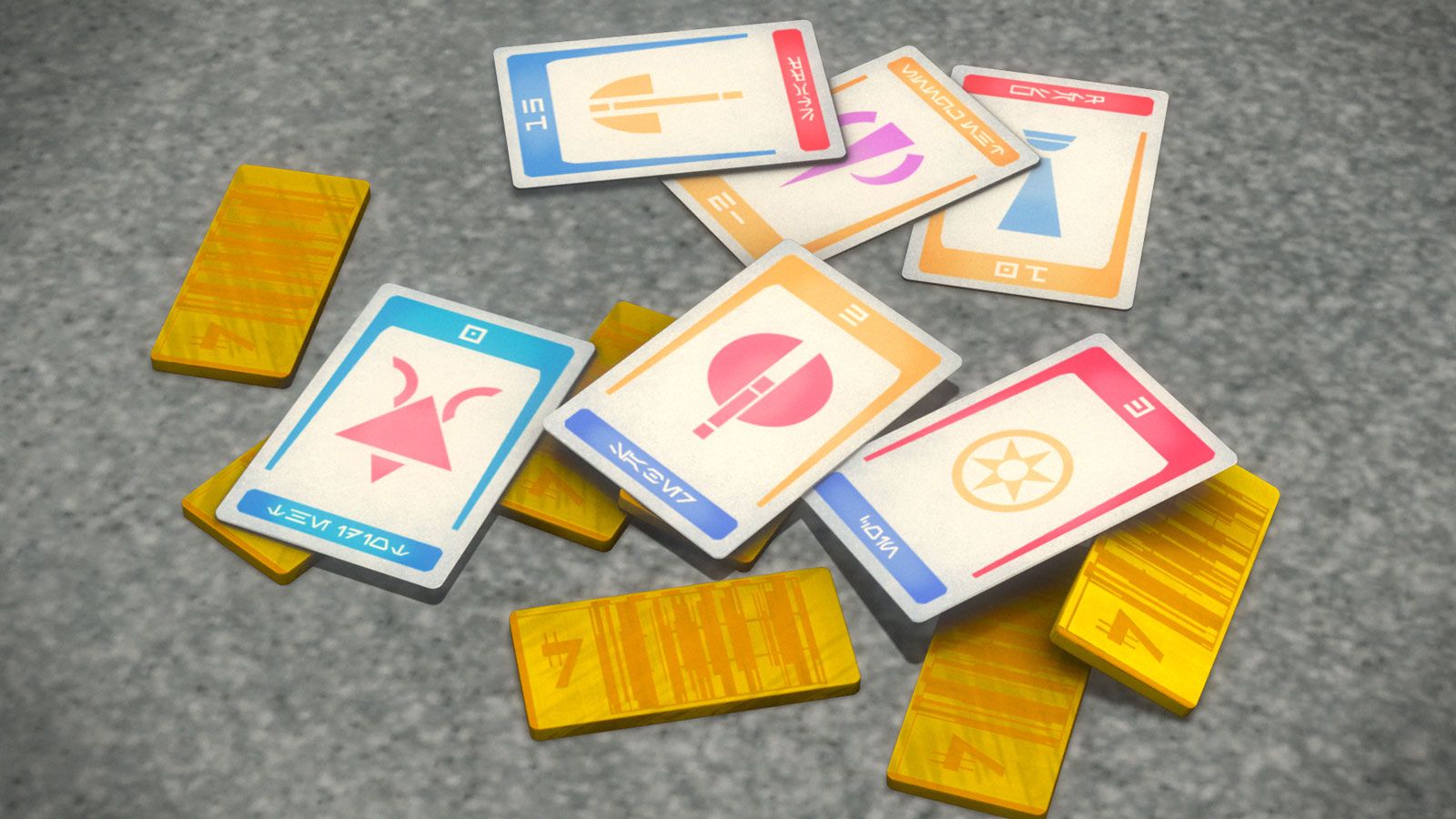Although the holographic Dejarik holds a special place in the hearts of Star Wars fans, if for no other reason than it taught the important lesson to let the Wookiee win, arguably no game looms larger in the franchise than sabacc. Long part of the legend of Han Solo, it plays a central role in Solo: A Star Wars Story, which at last depicts the fabled game in which the smuggler wins the Millennium Falcon from Lando Calrissian. But what is sabacc?
Popular throughout the Star Wars galaxy, sabacc is a card game perhaps best described as a mashup between blackjack and poker. Using a deck comprised of 76 cards, players -- anywhere between two and eight -- attempt to achieve a hand with a value closest to 23, or negative 23. If a player reaches either of those targets, it's considered a perfect hand, or "Pure Sabacc," and can only be beaten by a rare combination known as the "Idiot's Array" (that's how Lando beat Zeb in the aptly named Star Wars Rebels Season 1 episode "Idiot's Array," which resulted in the Ghost crew going to work for the gambler).
RELATED: Solo Is the Most Expensive Star Wars Movie to Date
That sounds pretty simple, right? Well, sabacc gets a bit complicated, even before we get into all of the variants of the game.
Much like our playing decks, sabacc decks have four suits -- Flasks, Sabers, Staves and Coins -- with pip cards numbered 1 through 11, plus face cards in the form of the Commander, Mistress, Master and Ace, numbered through 15. In addition, there are two sets of eight special cards that have negative or neutral point values: The Idiot, The Queen of Air and Darkness, Balance, Endurance, Demise, Moderation, The Evil One and The Star.
Sabacc begins with each player dealt two cards, face down; each player then calls out her hand total. She then can draw one or more cards from the deck, and choose to exchange them with those in her hand, or stand.
RELATED: Wait, Han Solo Was Nearly in Star Wars: Revenge of the Sith?
Here's where it gets difficult, because the values and suits of the cards can change at random in what's called a "Sabacc Shift." That value can be locked in by placing a card in the table's interference field, but that risks the player's strategy becoming known to her competitors. The new hand created following the shift, including the card in the interference field.
Once all of the players have had their turn, they call out their hand total; the winner is the one who scores closest to 23 without going over. Those with a hand of 24 or higher are said to have "bombed out," a loss accompanied by a financial penalty equal to the amount of the main pot.
Of course, once players have all of that in hand, they must also contend with variants of sabacc, most notably Corellian Spike, which incorporates a pair of six-sided dice into gameplay. According to Star Wars tradition, Han won the Millennium Falcon playing the Corellian Spike variant, and kept the dice as a lucky charm that he hung in the ship's cockpit. However, while Solo immortalizes that legendary face-off between Han and Lando, the film introduces another origin for those dice -- but we'll dig into that later...
Directed by Ron Howard from a script by Lawrence and Jon Kasdan, Solo: A Star Wars Story stars Alden Ehrenreich as Han Solo, Donald Glover as Lando Calrissian, Emilia Clarke as Qi’ra and Joonas Suotamo as Chewbacca. They’re joined by Thandie Newton as Val, Phoebe Waller-Bridge as L3-37, Paul Bettany as Dryden Vos and Woody Harrelson as Tobias Beckett. The film opens Friday nationwide.


